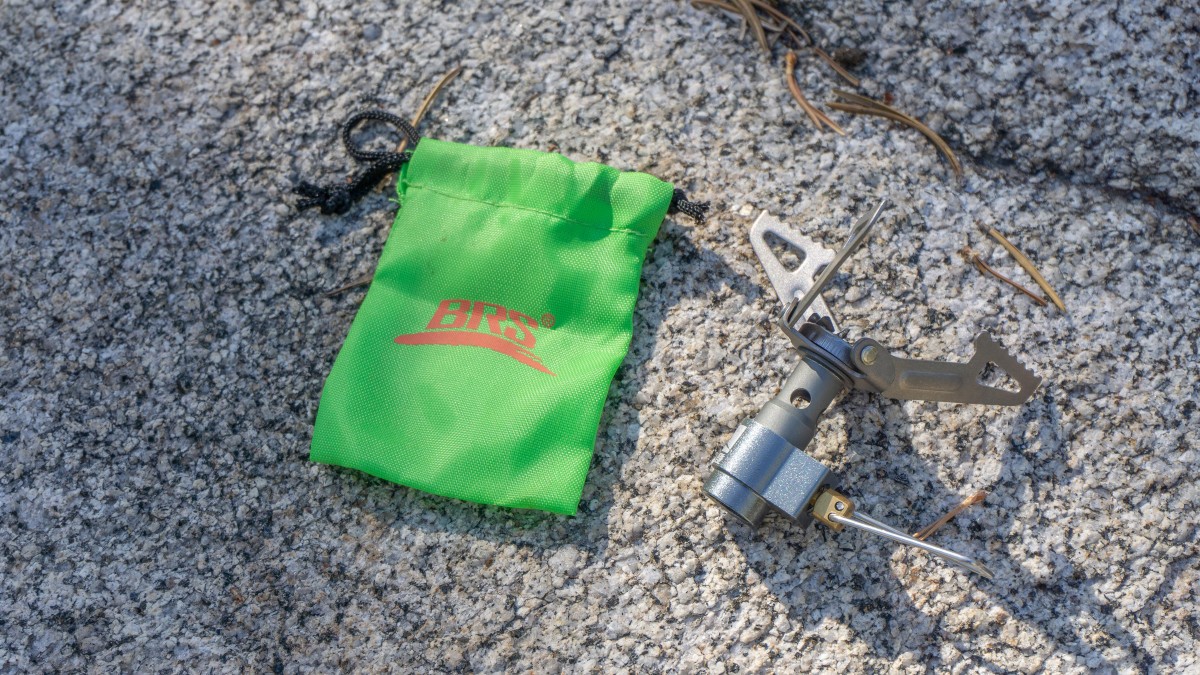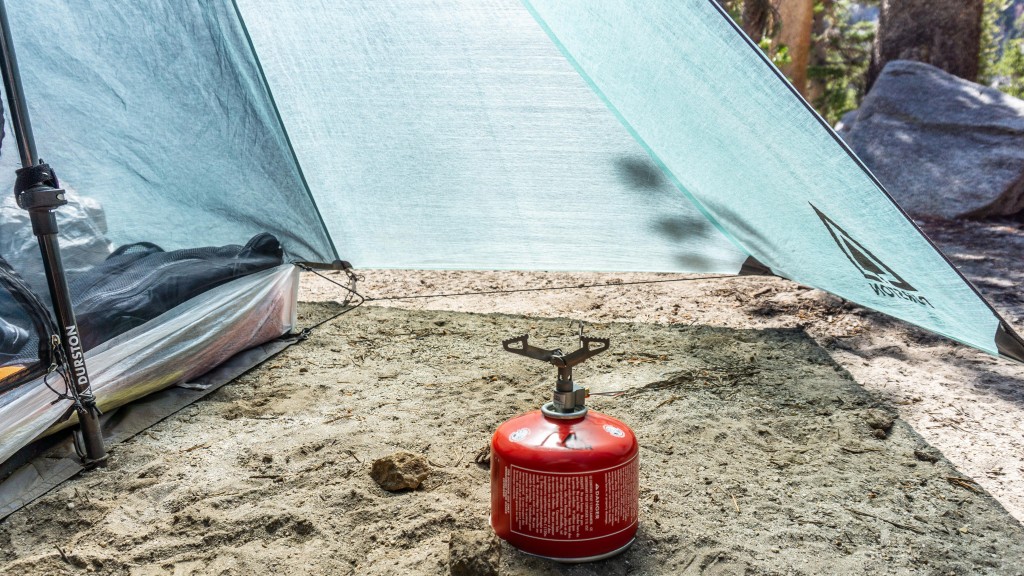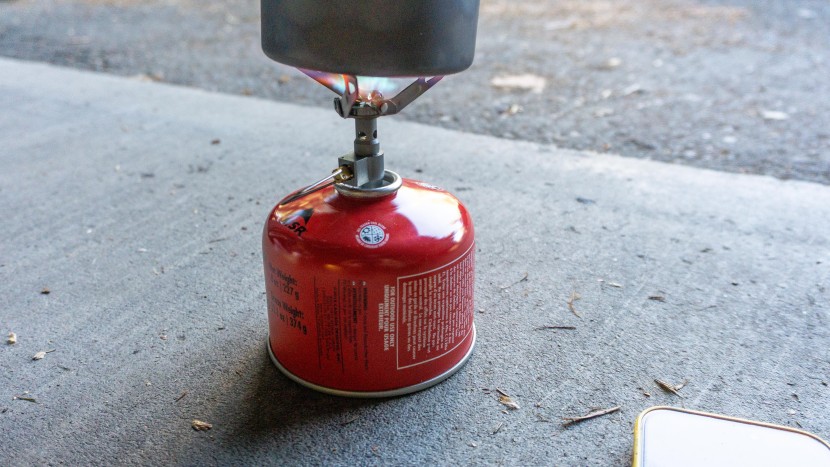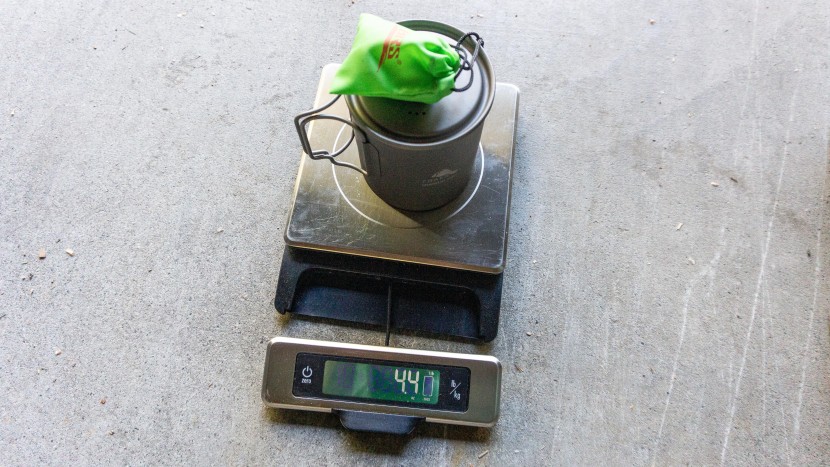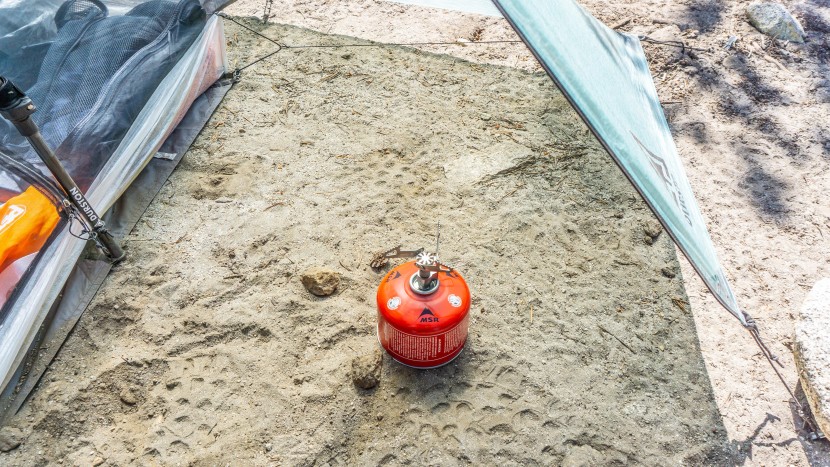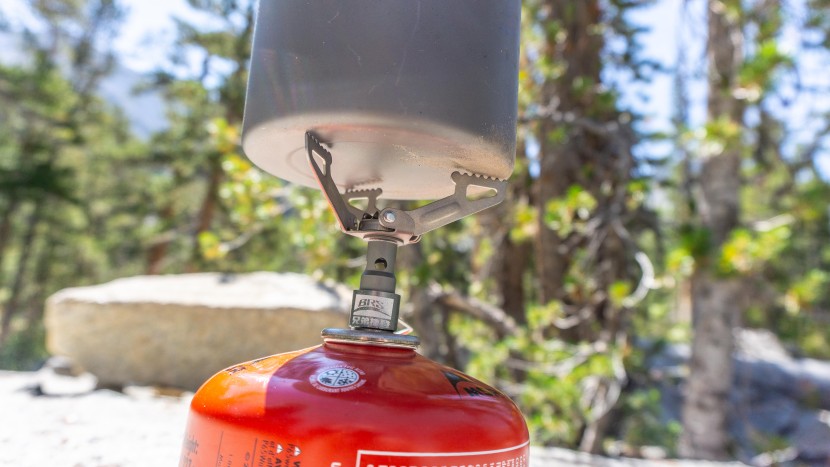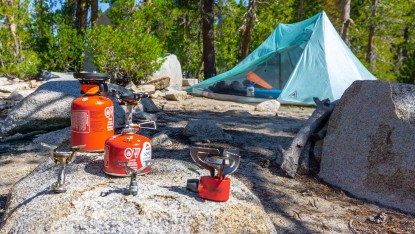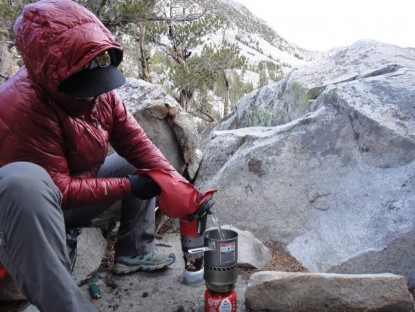
Our Verdict
Our Analysis and Test Results
All small canister stoves are just that — small. However, like an Olympic gymnast standing next to a regular-sized person, the BRS-3000T makes the other stoves look big. It has a weight to match: 1.4 ounces (with the included bag). We should note that a number of online reviewers experienced durability issues, but we haven't had any issues throughout our testing (and we've purchased this stove for testing three times over the past several years).
Fuel Efficiency
This little stove packs a punch, with impressively high heat output for its size and weight. Unfortunately, it's lacking the fuel control of more expensive options, but it still managed to land around the middle of the pack.
In lab testing, we found it used an average of .31 ounces of isobutane per boil, which surprised our team, since so much of its flame burns outwards away from the bottom of the pot. As we got into higher altitudes, colder temperatures, or things got windy, we saw a much more dramatic drop in fuel efficiency, but this was common with every ultra-lightweight stove we tested.
Weight
Weight is where the BRS really shines. Though weight differences can be significant when comparing different types of stoves (say, small canister to liquid fuel), within small canister models, weight is becoming less important. Modern small canister stoves weigh between 1 and 4 ounces, and our testers think this isn't the most productive place for backpackers to shed weight. That being said, the BRS is impressively light, just 1.4 ounces, and its essentials weight (which includes a lightweight titanium pot) puts it at 4.4 ounces total.
The other impressive characteristic is how small this stove is. When folded for transport, it measures about 2" x 1.5" x 1.5". Our testers find bulk to be a pretty important real-world metric because we like to store all of our cooking gear in our pot when on the trail. The BRS fits easily into any of our tester pots with room to spare. This stove could pair well with a small titanium cup used as a pot on a solo trip.
Simmering Ability
While some backpackers are happy to eat freeze-dried food for days on end, for others, the ability to cook a more complicated meal is important. The first characteristic we look at when considering simmering is the character of the control valve. The BRS has smooth and consistent resistance throughout its range. This makes it easy to turn the flame waaaay down to the point where it looks like that of a single candle. It was much easier to do this with the BRS than with any liquid fuel stove. That being said, simmering only works in the absence of wind. If you require reliable simmering ability and plan to camp in the mountains, you might want to check out one of the small canister stoves that simmer well and deliver good performance in the wind.
Another important quality when it comes to actual cooking is the size of the burner head. A broad burner head helps distribute heat more evenly around a pot or pan. Obviously, big burner heads weigh more and take up more pack space. Anyone reading this review can probably guess that the burner head on the BRS is tiny. If you want to do cooking that requires simmering (oatmeal, refried beans, etc.) with this stove, be prepared for attentive cooking and continuous stirring.
Wind Resistance
When an overnight trip gets windy, get ready for some challenges with the BRS 3000T, with an unprotected burner making it more susceptible to wind. Fortunately, we were still able to make some delicious meals with the BRS, but the burner blew out a few times throughout testing.
The BRS 3000T is so light and nimble that we weren't surprised by its struggles with wind resistance. Even when it didn't completely blow out, it boiled water substantially slower, and skillet-cooking required more time as well. This model is best for outdoor enthusiasts who are generally camping in more sheltered areas or are willing to deal with lengthy cook times above treeline.
Ease Of Use
Overall, this is an easy stove: take it out of the box, screw an isobutane tank onto it, and get cooking. While there were a few nuisances with the BRS-3000T, we all agreed that it performed similarly to other micro-sized stoves.
The smaller legs of the BRS makes it less stable for larger skillets, but with our ultralight titanium pot, it worked just fine. However, the legs require caution when unfolding to ensure that they create a level surface for your cookware. Additionally, as previously mentioned, the BRS flame burns in all directions, making it a bit more hazardous to handle if running the stove at its highest output.
Should You Buy the BRS 3000T?
This stove is an excellent example of when technology has been around for long enough for the price to come way down. It's a “middle shelf” small canister stove at a “bottom shelf” price. This featherweight stove is a great value, especially for ultralight backpackers or those who are occasionally out solo for a night or two. It's inexpensive enough that it's easy to justify buying it as a second (or third) stove.
What Other Backpacking Stoves Should You Consider?
Take a look at the Soto Amicus if you're looking for a higher-performance option that's still offered at a reasonable price, or consider the Soto Windmaster if you need a lightweight stove that performs great in the wind. If you want a stove with an integrated pot, take a look at the Jetboil MiniMo or Jetboil Stash.
| Awards | Best on a Tight Budget |
|---|---|
| Price | $17.00 List Check Price at Amazon |
Overall Score  |
|
| Star Rating | |
| Bottom Line | A shockingly small, ultra-lightweight, and straightforward backpacking stove at an impressively low price |
| Pros | Insanely light, great packability, easy on the wallet |
| Cons | Small burner head, less stable pot legs, so-so wind resistance |
| Rating Categories | BRS-3000T |
| Fuel Efficiency (25%) | |
| Weight (25%) | |
| Simmering Ability (20%) | |
| Ease of Use (15%) | |
| Wind Resistance (15%) | |
| Specifications | BRS-3000T |
| Weight | 1.4 oz |
| Type | Small canister |
| Fuel Type | Isobutane |
| Additional Included Items | Stuff sack |
| Piezo Igniter | No |
| Measured Essential Weight | 4.4 oz |
| Dimensions | 2" x 1.8" x 3.2" |
| Boil Time .5 liters | 3 min 8 sec |


